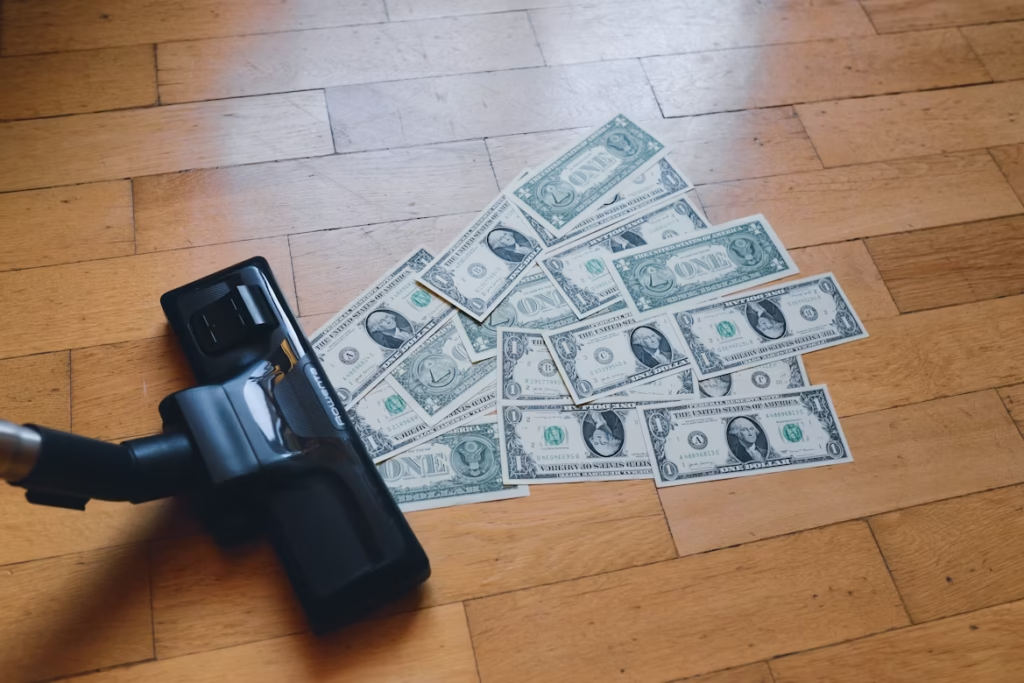
In 2025, almost everyone feels it: your grocery bill is higher, rent jumped again, and that chocolate bar looks suspiciously smaller. This silent thief stealing your money’s value has a name inflation.
According to the U.S. Bureau of Labor Statistics and OECD data, prices in the United States have risen more than 23% cumulatively since 2020, while global inflation is still running at around 4.2% in 2025 — much higher than the 2% target most central banks want. [1][2] Let’s break it down in the simplest way possible.
What Exactly Is Inflation?
Inflation is when prices of goods and services rise over time, which means your money buys less than it used to.
Think of it this way:
In 2020, $100 bought you a full shopping cart.
In 2025, the same $100 barely fills half the cart.
When inflation is around 2% per year, most people don’t notice much.
But when it stays above 4–9% for years (like now), life gets painful fast.
The Main Types of Inflation You’re Facing Right Now:
Demand-Pull Inflation:
Cause: Too many people want to buy things, but there aren’t enough products.
Example: After lockdowns ended, everyone rushed to travel and eat out → prices shot up.
Cost-Push Inflation:
Cause: Companies pay more for energy, shipping, or wages → they pass the cost to you.
Real-life 2025 example: New tariffs and high energy prices are pushing costs higher again.
Food Inflation:
Cause: Bad weather, wars, and supply problems make food more expensive.
Result: Food prices in the U.S. are up over 29% since 2019 — far worse than general inflation.[1]
Shrinkflation (the sneaky one!):
Cause: Companies quietly give you less product for the same price instead of raising the sticker price.
Famous examples:
– Smaller chip bags
– Narrower toilet paper rolls
– Tiny chocolate bars that still cost the same
Wage-Price Spiral:
Cause: Workers ask for higher pay → companies raise prices → workers need even higher pay → repeat.
Stagflation (the nightmare mix):
High inflation + slow growth + rising unemployment. Many experts now warn 2025–2026 could feel like “stagflation lite” again.[2]
Why Do Governments Often Just Watch While People Suffer?
– Central banks raise interest rates to fight inflation, but if they raise too fast → recession and job losses.
– Politicians hate being the ones who make mortgages and car loans expensive before elections.
– A lot of today’s started when governments printed trillions during the pandemic — money that is still circulating.
Result? Regular families feel the pain first and longest.
The Only Real Way Out: Change YOUR Money Mindset and Habits
Governments move slowly, but you can protect yourself today:
- Spend less than you earn
- Buy assets that rise with inflation: real estate, gold, quality stocks, or Bitcoin
- Negotiate your salary — if prices went up 23% since 2020, your pay should too
- Switch to cheaper brands or buy in bulk
- Learn high-demand skills and start a side hustle
- Avoid credit-card debt (20–30% interest destroys you in high inflation)
Final Thought
Inflation won’t disappear completely — it’s built into the modern money system.
Governments will keep debating.
Companies will keep trying shrinkflation tricks.
But the person who understands the game and adapts fast is the one who wins.
Your money is under attack every single day.
The good news? You have more power than you think.
Start today — small changes add up fast when prices never stop rising.
Which type hurts you the most right now food inflation, shrinkflation, or something else? Tell us in the comments! 👇
Sources:
[1] U.S. Bureau of Labor Statistics – Consumer Price Index Summary (latest 2025 data)